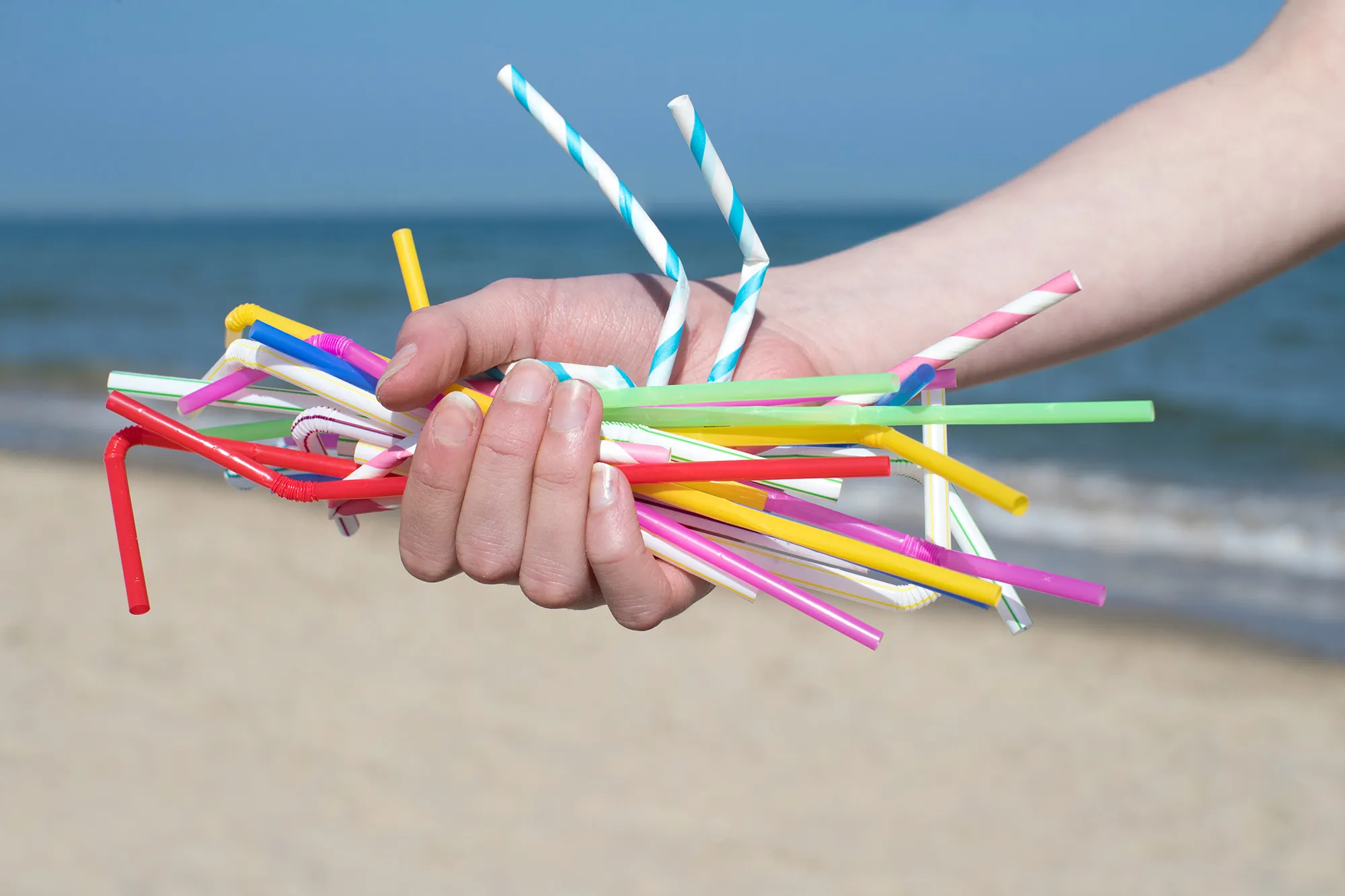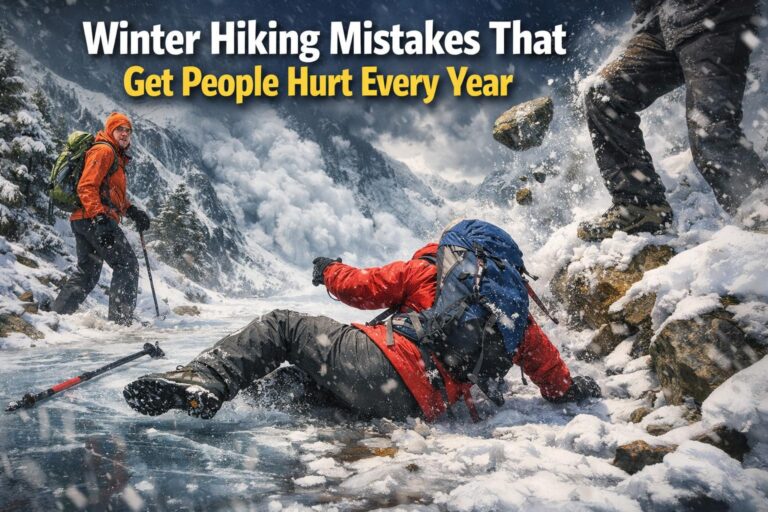
Standing at the edge of a pristine mountain lake, watching the morning mist rise from glass-still water, it’s hard to imagine that a tiny piece of plastic could threaten this natural sanctuary. Yet plastic straws—those ubiquitous drinking aids we barely think about—have become ground zero in America’s battle against plastic pollution. Whether you’re planning your next camping trip or simply trying to understand the regulatory landscape, the plastic straw ban movement affects outdoor enthusiasts and conscious consumers nationwide.
Are Plastic Straws Banned? The Current State of Regulations
Plastic straws aren’t banned everywhere, but significant restrictions exist across much of the United States. Currently, eight states have implemented statewide plastic straw restrictions: California, Maine, New Jersey, New York, Oregon, Rhode Island, Vermont, and Washington. However, these laws vary dramatically in scope and enforcement.
California leads the charge with Assembly Bill 1884, which requires full-service restaurants to provide plastic straws only upon customer request. The California State Public Health Officers oversee enforcement, working alongside local agencies like the Los Angeles County Department of Public Health, Environmental Health Division (DPH-EH) and San Diego County’s Department of Environmental Health and Quality. These agencies conduct routine inspections, issuing warnings for first and second violations, followed by $25 daily fines capped at $300 annually.
Individual cities often exceed state requirements. San Francisco, Seattle, and Santa Barbara have implemented complete plastic straw bans, while hundreds of municipalities have adopted “straws upon request” policies. The patchwork of regulations means that as you travel between campsites, national parks, and outdoor destinations, you’ll encounter different rules depending on your location.
Why Should Plastic Straws Be Banned? The Environmental Case
The environmental argument for plastic straw restrictions extends far beyond the dining room. For outdoor enthusiasts who witness plastic pollution firsthand on remote trails and pristine beaches, the case for change is compelling. Americans use approximately 500 million plastic straws daily, creating an enormous waste stream that directly impacts the wild places we cherish.
Plastic straws pose unique environmental challenges due to their size and composition. Their lightweight design makes them prone to wind dispersal from trash receptacles, leading to widespread littering in natural areas. Unlike other plastics, most straws cannot be recycled due to their size and the mixed plastics used in production. This means every straw used ends up in a landfill or, worse, in our waterways and wilderness areas.
Marine wildlife faces particular danger from plastic straws. Sea turtles, seabirds, and marine mammals frequently mistake plastic debris for food, leading to internal injuries, malnutrition, and death. The viral video of a sea turtle with a plastic straw lodged in its nostril sparked widespread awareness, but scientists estimate that as many as 70% of seabirds and 30% of sea turtles have ingested ocean plastic.
The conservation aspect resonates deeply with outdoors enthusiasts who follow Leave No Trace principles. Just as we pack out our trash from backcountry campsites, reducing single-use plastics aligns with the broader sustainability ethos that guides responsible outdoor recreation.
Understanding the Regulatory Framework
The enforcement of plastic straw bans involves multiple government levels, creating a complex regulatory environment. At the state level, health departments typically oversee implementation through existing food safety inspection programs. Local environmental health divisions conduct routine restaurant inspections, checking compliance alongside standard food safety measures.
Penalties vary significantly by jurisdiction. California’s relatively modest fines contrast sharply with cities like Santa Barbara, where repeat violations can result in jail time up to six months. Most regulations include exemptions for individuals with disabilities who require straws for medical purposes, acknowledging the accessibility concerns raised by disability rights advocates.
The regulatory framework continues evolving as new legislation emerges. Recent federal developments have added complexity to the landscape, with changing executive orders affecting government procurement policies around single-use plastics.
The Accessibility Challenge
While environmental goals drive most plastic straw ban advocacy, disability rights concerns have introduced important nuance to the conversation. Many individuals with mobility limitations, tremors, or swallowing difficulties rely on bendable plastic straws for safe drinking. Alternative materials like paper, metal, or bamboo often prove inadequate or dangerous for these users.
The disability community emphasizes that plastic straws represent essential medical equipment, not convenience items. Paper straws can pose choking hazards for individuals with swallowing difficulties, while metal straws present injury risks for those with tremors or spastic episodes. Reusable alternatives require cleaning capabilities that may be impractical for people with certain disabilities or living situations.
This tension has led to more thoughtful policy design. Most plastic straw restrictions include provisions allowing straws upon request, ensuring continued access for those who need them while reducing overall consumption. The goal shifts from complete elimination to mindful usage, balancing environmental protection with individual accessibility needs.
Current Political Landscape and Recent Developments
The plastic straw ban debate has taken on political dimensions, particularly following recent executive actions at the federal level. Political positions on environmental regulations have created partisan divides around plastic pollution policies, with some viewing straw bans as government overreach while others see them as necessary environmental protection.
Recent federal policy changes have affected government procurement practices around single-use plastics, creating uncertainty about long-term regulatory direction. These developments don’t directly impact state and local plastic straw laws but may influence future federal environmental policies.
For outdoor enthusiasts, the political dimensions matter less than practical implementation. Regardless of federal policies, state and local plastic straw restrictions continue operating, meaning travelers must remain aware of varying regulations across jurisdictions.
Practical Alternatives for Outdoor Enthusiasts
The outdoor community has embraced sustainable alternatives that align with backcountry values of durability and minimal waste. Stainless steel straws offer excellent durability for camping and backpacking, though they require careful handling around campfires. Silicone straws provide flexibility and safety while remaining reusable for thousands of uses.
Bamboo and wheat-based straws offer biodegradable options that decompose naturally if accidentally left in the wilderness, though they shouldn’t be deliberately discarded. Paper straws work adequately for short-term use but may fail during extended outdoor activities where drinks sit for extended periods.
Many outdoor gear manufacturers now produce collapsible straw systems designed for hiking and camping. These typically include cleaning brushes and carrying cases, making them practical for backcountry use where washing opportunities are limited.
Regional Variations and Travel Considerations
Understanding regional plastic straw policies becomes essential for outdoor enthusiasts who travel extensively. West Coast destinations generally have more restrictive policies, while many interior states lack statewide regulations. National parks follow federal guidelines, but nearby gateway communities may have local restrictions.
Planning outdoor trips now includes researching local plastic policies alongside traditional considerations like permits and weather conditions. Apps and websites tracking plastic-free businesses help identify establishments aligned with sustainable values, supporting local economies that prioritize environmental protection.
Cross-border travel adds another layer of complexity. Canada has implemented federal single-use plastic regulations, while Mexico varies by state and municipality. International outdoor adventures require research into local environmental regulations and cultural attitudes toward plastic consumption.
The Bigger Picture: Beyond Straws
Plastic straw bans represent entry-level environmental action rather than comprehensive solutions to plastic pollution. For outdoor enthusiasts familiar with the massive plastic debris found in remote locations, straw restrictions feel simultaneously important and insufficient.
The most significant environmental impact comes from addressing larger plastic pollution sources. Fishing nets comprise nearly half of ocean plastic waste, while food packaging and beverage containers dwarf straw contributions to total plastic consumption. However, straw bans serve as gateway policies that raise awareness about broader plastic pollution issues.
This awareness translates into more comprehensive environmental action. Communities that implement straw restrictions often expand to address plastic bags, food containers, and other single-use items. The progression mirrors how outdoor enthusiasts often begin with simple Leave No Trace practices before adopting broader wilderness conservation ethics.
Building Sustainable Outdoor Communities
The plastic straw ban movement reflects growing environmental consciousness within outdoor recreation communities. Gear manufacturers increasingly emphasize sustainable materials and production methods, while outdoor retailers promote reusable alternatives to single-use items.
Local outdoor clubs and recreation groups have become important advocates for plastic reduction policies. Their firsthand experience with plastic pollution in natural areas provides compelling testimony for policy makers considering environmental regulations. This grassroots advocacy proves particularly effective because it comes from constituents who actually witness environmental impacts rather than abstract policy positions.
Conservation organizations now regularly incorporate plastic reduction into their education and advocacy programs. The connection between individual consumption choices and wilderness protection resonates strongly with outdoor enthusiasts who understand ecosystem interconnections through direct experience.
Looking Forward: The Trail Ahead
The plastic straw ban movement continues evolving as technology, policy, and public awareness advance. Biodegradable alternatives improve in quality and affordability, while consumer awareness drives demand for sustainable options. Policy makers refine regulations to balance environmental protection with accessibility needs.
For outdoor enthusiasts, the plastic straw debate represents broader questions about sustainability, individual responsibility, and environmental stewardship. The same values that guide Leave No Trace camping and responsible wildlife viewing apply to everyday consumption choices that affect the wild places we cherish.
Success in plastic pollution reduction requires the same approach that works in wilderness conservation: combining individual responsibility with systemic change, local action with broader policy initiatives, and immediate steps with long-term vision. Whether you’re planning your next backpacking trip or choosing your daily coffee routine, understanding plastic straw policies helps navigate both regulatory requirements and environmental responsibilities.
The trail forward involves continuing education, thoughtful policy development, and practical solutions that protect both natural environments and human accessibility needs. Just as outdoor enthusiasts have learned to minimize their backcountry impact while maximizing their wilderness experience, society can reduce plastic consumption while maintaining quality of life and accommodation for diverse needs.






